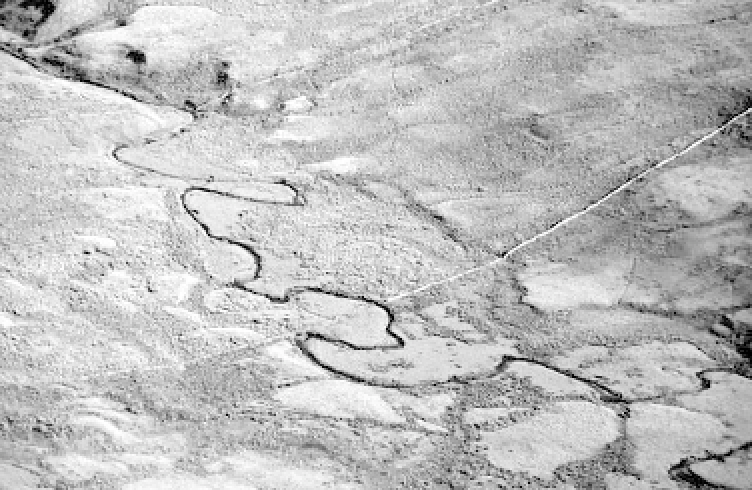Geology Reference
In-Depth Information
Plate 14.1
River meanders in Swinhope Burn, northern Pennines, England.
(
Photograph by Jeff Warburton
)
Environmental change, and in particular climatic
change, may alter geomorphic process rates and pro-
cess regimes in landscapes. These alterations may drive
the landscape into disequilibrium, causing geomorphic
activity to increase for a while or possibly to stop.
This will be especially so with a change in process regime
because the landscape will automatically be in dise-
quilibrium with the new processes. A phase of intense
activity will likely ensue, involving the reshaping of hill-
slopes, the reworking of regolith, and the changing of
sediment stores in valley bottoms. Richard Chorley and
his co-authors (1984, 1-42) claimed that geomorphol-
ogists working on Pleistocene and Holocene timescales
lacked a cogent theoretical base for explaining the links
between climatic forcing and geomorphic change, and
adopted a rather spongy paradigm involving the concepts
of thresholds, feedbacks, complex response, and episodic
activity. Over twenty years later, climatic changes induced
by changes in the frequency and magnitude of solar
radiation receipt - orbital forcing - provide in part
the missing theoretical base against which to assess the
complex dynamics of landform systems: landscape
changes over periods of 1,000 to 100,000 years display
consistent patterns largely forced by climatic, eustatic,
or tectonic conditions. This chapter will explore land-
scape change during the Quaternary period, focusing on
fluvial, aeolian, marine, and hillslope environments.
Quaternary geomorphology relies heavily on various
chronological analyses, particularly those based on strati-
graphical studies of Quaternary sediments. Observed
stratigraphical relationships furnish relative chronologies
(events placed in order of occurrence but without accu-
rately fixed dates). Absolute chronologies derive from
sequences dated using historical records, radiocarbon
analysis, dendrochronology, luminescence, palaeomag-
netism, and so forth (Box 14.1).
FLUVIAL CHANGES
The fluvial system responds to environmental change.
It is especially responsive to tectonic changes, cli-
matic changes, and changes in vegetation cover and
land use. Chapter 5 explored some of the effects of
tectonic processes on drainage and drainage patterns.
Climatic
changes
are
evidenced
in
misfit streams

